|

The Veil of Manoppello currently measures 17x24 centimetres. It is known that in
1618 father Clemente of Castelvecchio removed the worn-out edges of the Veil and
brother Remigio of Rapino placed the relic between two glass panes connected
with a walnut frame. Earlier, when the Veil had been stored in the Vatican, its
dimensions had been much bigger. You may see it for yourself when you look at
the title page of “Opusculum” written in 1618 Jacopo Grimaldi.

Opusculum by Jacopo Grimaldi, 1618 Many researchers
believe that the frame in which the Veil had been kept is currently located in
the Vatican treasury. It is lavishly embellished and the glass panes are cracked.
It measures much more (i.e. about 31x34 centimetres) than the walnut frame of
Manoppello.

The Vatican reliquary However, both the Vatican frame
and the frame of Manoppello serve the same purpose which is to exhibit an item
which can be viewed from two sides as a slide or transparency. It is worth
noting that the first contemporary colour transparencies were created in the
20th century.

35mm slides
Let us compare the current dimensions of the Veil with the
hypothetical initial dimensions:
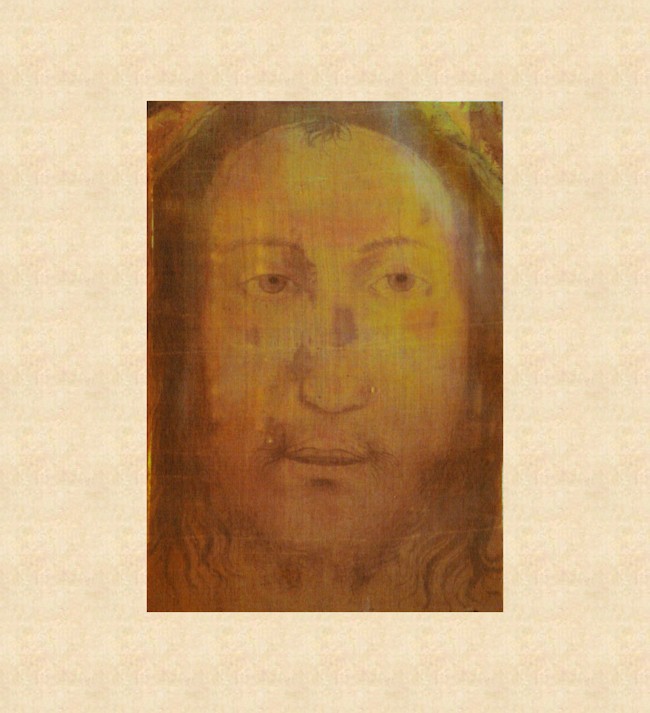
The Vatican: 31x34 centimetres
Manoppello: 14x24 centimetres
Examining the fabric it is easy to notice many brighter lines
which seem laid out in a disorderly way. Some are thin and barely visible,
others are clearer to see. They are most likely the marks left by repeated
folding of the fabric. One can imagine that the Veil has not always been
exhibited as a transparency. Initially, it must have been viewed against the
light while being held in hands and then repeatedly folded.

The brighter lines on the fabric
The diagram below presents an attempt at matching the lines
of folding to the initial dimensions of the Veil. The red lines a, b, c,
and e show wider marks of the fabric being folded (once lengthwise and
twice crosswise). They suggest the way the Veil has been folded since the image
was imprinted on it. The green lines d and f hint at the spot
where the Veil was cropped to current dimensions. One can also see the
triangular silk insets (in the top left and top right corner of the Veil). It is
not known why these areas were so heavily damaged
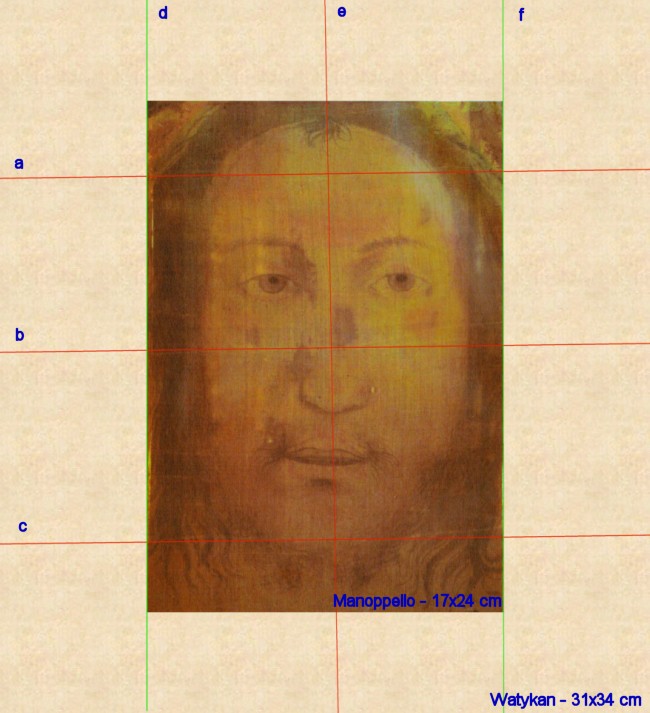
This is the way the Veil had been folded before it was cropped
The Veil was folded in a different way after it had been
removed from the Vatican frame. I made the diagram basing on the brighter lines
a, b and c. The hypothesis assumes that the Veil was folded once
lengthwise and three times crosswise. Therefore, the Veil was not only folded
along the “new” division lines but also along the “old” lines (d, e, f).
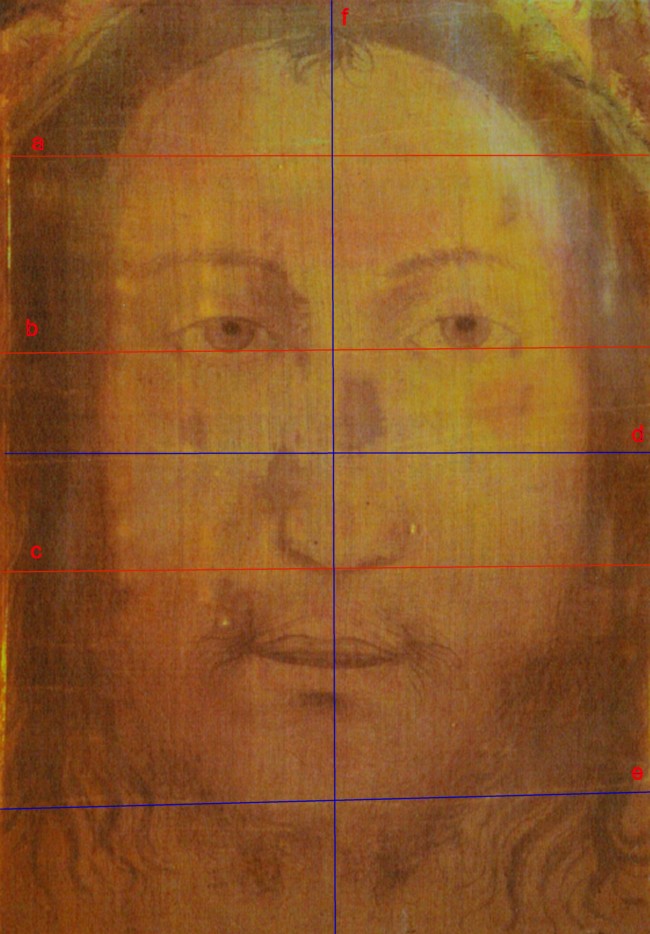
The way the Veil is folded after having been cropped to current dimensions
One fact which is left to be explained is the irregularity of
lines as they are not straight but rather twisted or even broken. The properties
of the fabric itself may be the explanation. Nylon, silk, or byssus are delicate
fabrics, "slippy" to the touch. They are difficult to fold along perfectly
straight lines just as it can be be done with a piece of paper.
Another hypothesis assumes that the brighter marks are not
left by folding but by sewing to the whole shroud with a thread. However, if
this was the case, the lines would be straight and unbroken.
The primary function of a veil was simple: it was to serve as
a head-dress for women. After being woven with a loom, the warp lines and the
weft lines were intersected at a right angle. Because of the incredibly delicate
structure, the weaving angles were deformed while the fabric was in use. Certain
threads were shifted through forces acting when the flat fabric was pulled on
the head, which is visible especially in the central part of the Veil. The image
itself was not deformed as it was imprinted later when the position of the
threads was already set.

The deformation of the fabric
Up to this time no textile expert has expressed any opinion
upon this issue.
Hypotheses on the initial dimensions of the Veil.
Antonio Teseo from Manoppello believes that initially the
Veil was square. Below you may find one of the representations of the Veil:
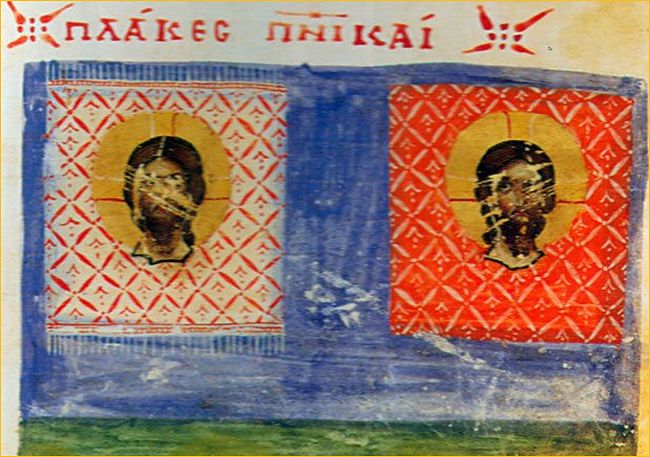
Mandylion e Keramion. Città del Vaticano, Biblioteca Apostolica Vaticana,
Cod. Ross. Gr. 251, XI-XII secolo, f. 12V
It is inasmuch interesting as the artist placed both the
averse and the reverse of the Veil in one picture. Jesus's Face is located in
the middle of a square piece of cloth. Decorative tassells and a tape
strengthening the cloth's edges are noticeable on the averse. The reverse lacks
these details.
In his study Il Volto Santo di Manoppello misurava 2
cubiti x 2, Antonio Teseo claims that the cloth's dimensions used to be
precisely 105 by 105 centimeters. In "Relatione historica di P. Donato Da
Bomba" (from 1640) there is a record stating that the image of the Holy Face
was made on a square piece of cloth and measured 4 by 4 Roman palms (which
stands for 1.05 by 1.05 meters). (In the original text: Partita poi la donna
con i quattro scudi, e, disbnigato gli affari in cui era occupato nell’ora del
contratto, tutto allegro e festoso l’avventurato Donat’Antonio per sì bella
compra, spiegò l’Immagine la quale era nel mezzo di un velo quadrato e tutto
trasparente per la rarità della tessitura, dalla grandezza di 4 palmi da ogni
lato). Palms, as a unit of measure, had already been used
in ancient Egypt. At the time when the Veil reached Manoppello (within the realm
of the Kingdom of Naples), a palm was equivalent to 0.263 meters or 26.3
centimeters. Basing on this data, Antonio Teseo concluded that the length of the
cloth's square side measured about 105 centimeters. At the time of Jesus,
valuable fabrics were measured in Egyptian cubits. One cubit was
equivalent to 52.5 centimeters. This means that the Veil's dimensions were
exactly 2 by 2 Egyptian cubits (52.5 x 2 = 105 centimeters).
In my opinion, this hypothesis, as it may happen to each
hypothesis, has its weak points. Many old depictions of the Veil show its
rectangular shape:
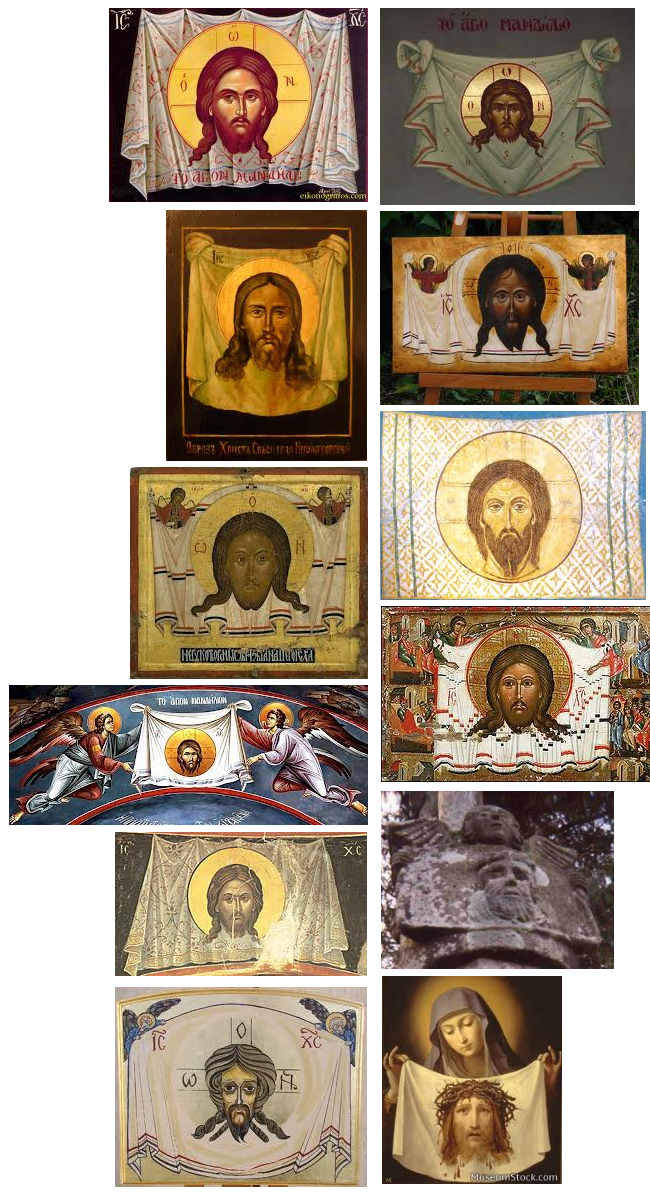
I asked my daughter how she puts on a square headscarf
measuring 1 by 1 meters which she sometimes wears. It turns out that first she
folds the scarf in half diagonally and then she puts it on her head. This leaves
an exactly diagonal mark of folding. The Veil of Manoppello has no such traces
and you can only notice the lines left after it was folded along and across its
axes. In my opinion, the initial length was in fact about 105 centimeters, but
the width was about 42 centimeters. Maybe later additional stripes of fabric
with tapes and tassells were added at the top and at the bottom. Today this does
not matter much. The contemporary shape of the Veil is a rectangle measuring 17
by 24 centimeters. What is most important is the fact that exactly this part
shows the content which is the most precious to us i.e. our Lord's Face.

King Abgar from St. Catherine Monastery on Mount Sinai, 10th century
The red line: the width of the Veil of Manoppello
(21 centimeters)
The green line:
5 by 21 = 105 centimeters of the width
2 by 21 = 42 centimeters of the height
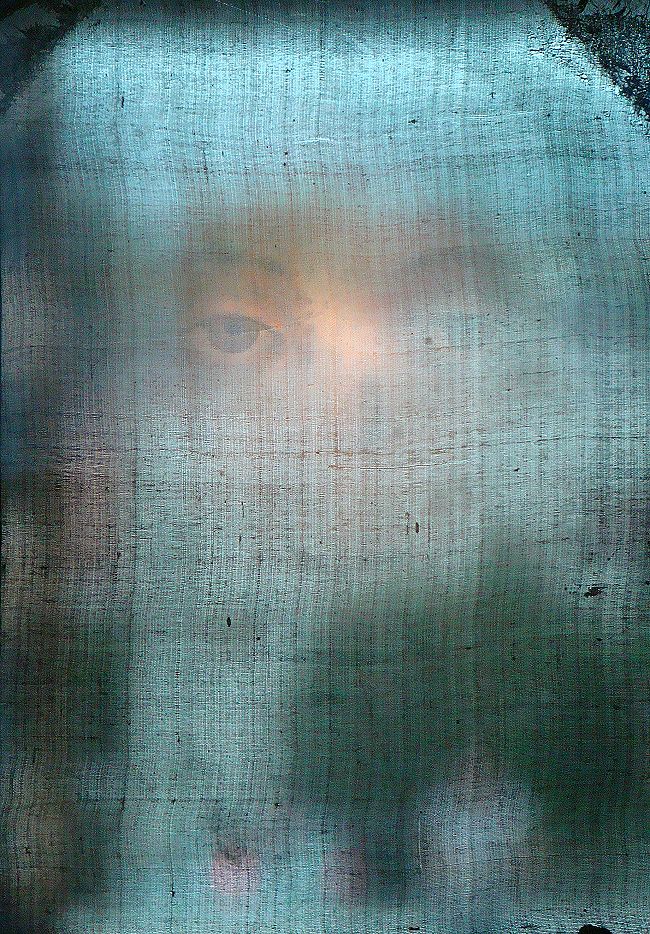
The Face by Paul Badde
|